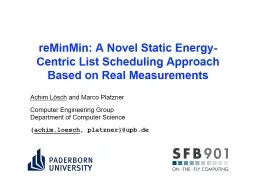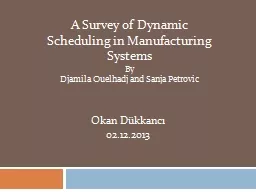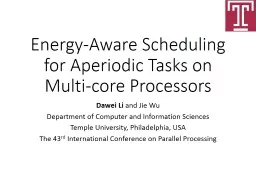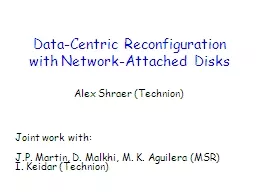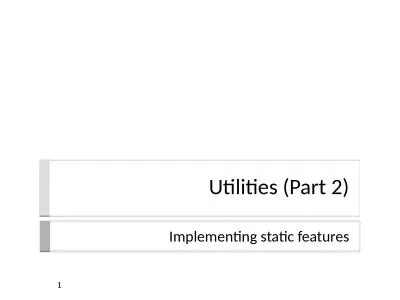PPT-reMinMin : A Novel Static Energy-Centric List Scheduling Approach Based on Real Measurements
Author : phoebe-click | Published Date : 2018-01-31
Achim Lösch and Marco Platzner achimloesch platzner upbde Heterogeneous Compute Node Contribution Novel energyoptimizing list scheduling approach for single
Presentation Embed Code
Download Presentation
Download Presentation The PPT/PDF document "reMinMin : A Novel Static Energy-Centric..." is the property of its rightful owner. Permission is granted to download and print the materials on this website for personal, non-commercial use only, and to display it on your personal computer provided you do not modify the materials and that you retain all copyright notices contained in the materials. By downloading content from our website, you accept the terms of this agreement.
reMinMin : A Novel Static Energy-Centric List Scheduling Approach Based on Real Measurements: Transcript
Download Rules Of Document
"reMinMin : A Novel Static Energy-Centric List Scheduling Approach Based on Real Measurements"The content belongs to its owner. You may download and print it for personal use, without modification, and keep all copyright notices. By downloading, you agree to these terms.
Related Documents

